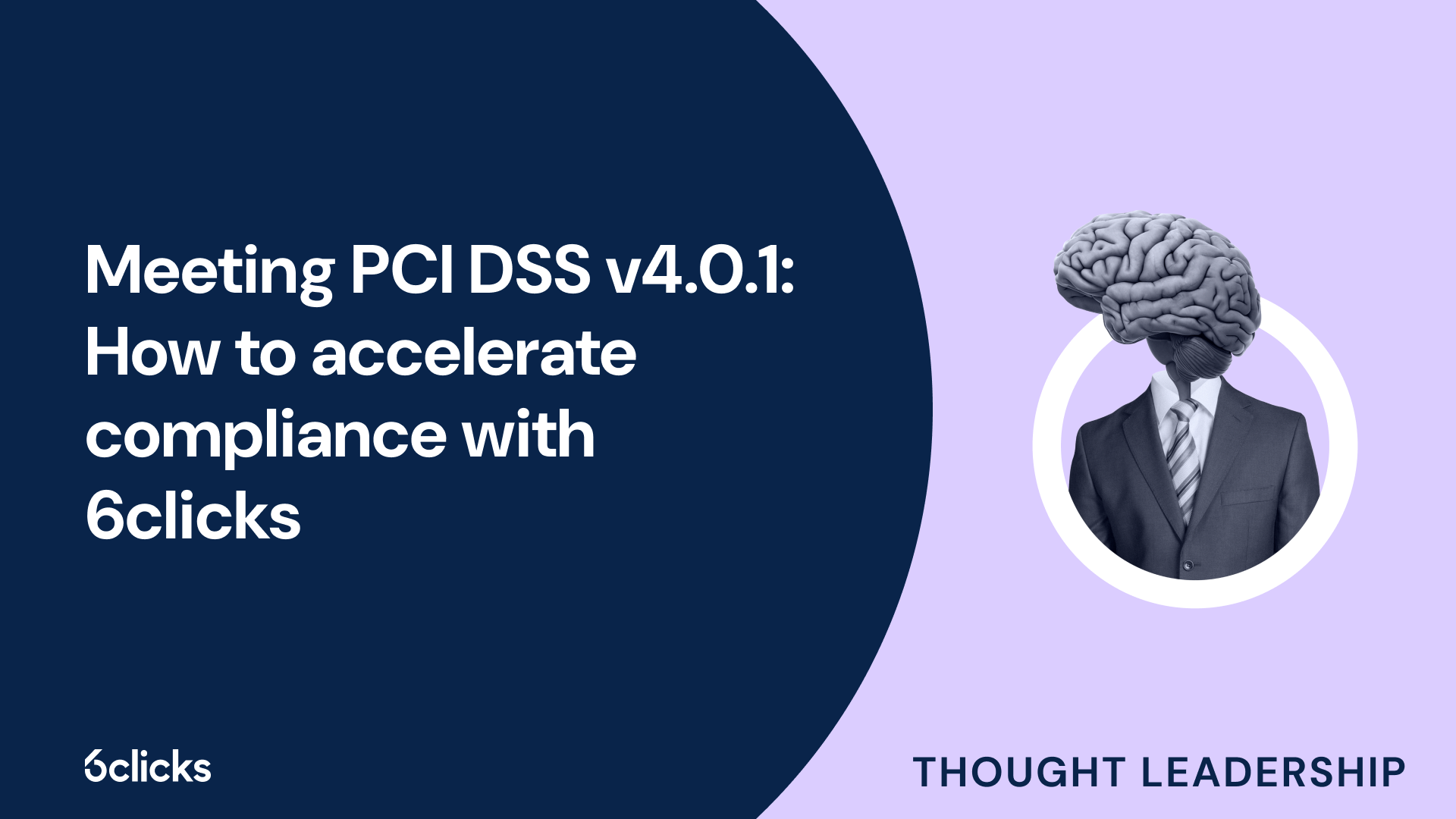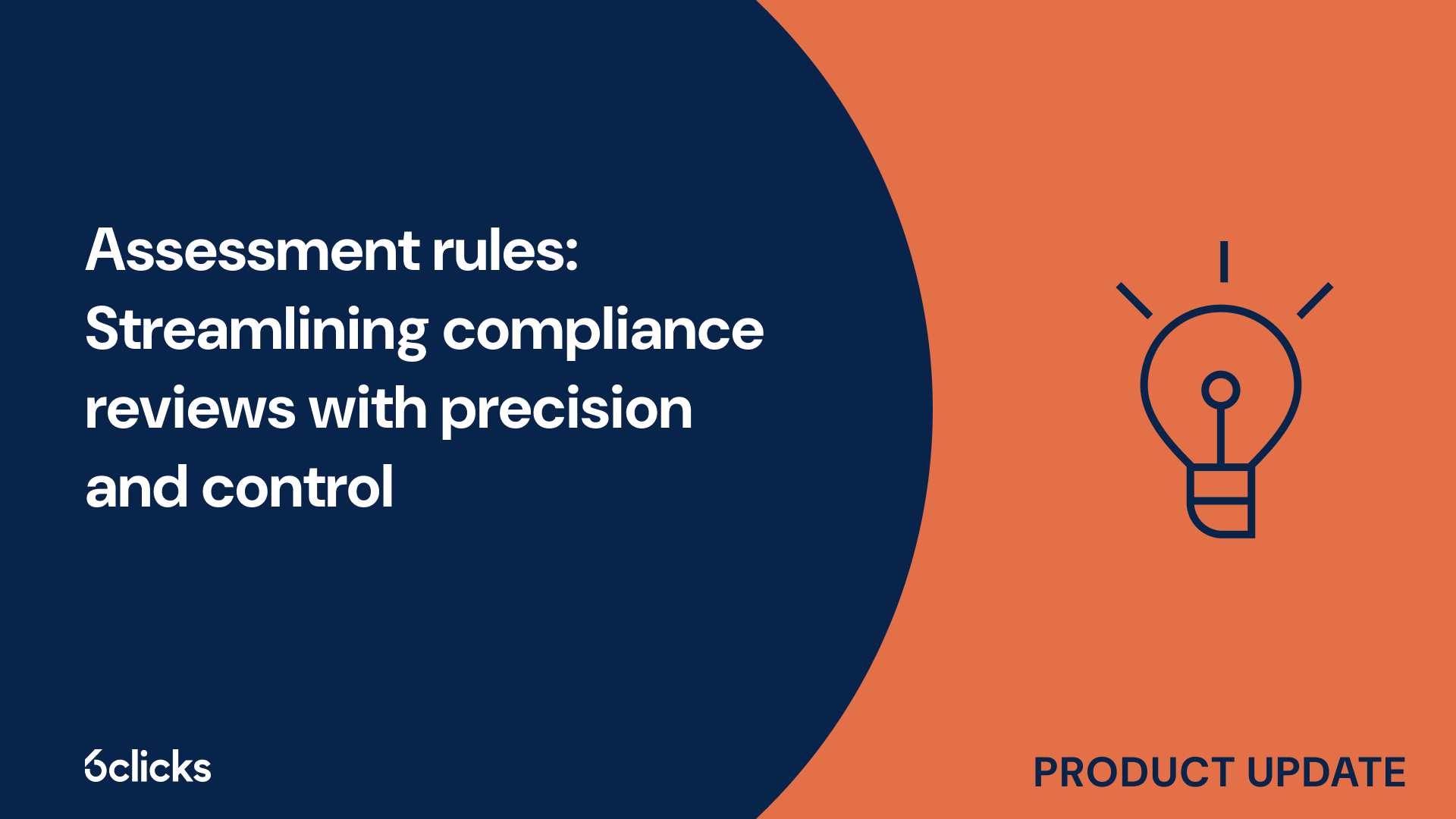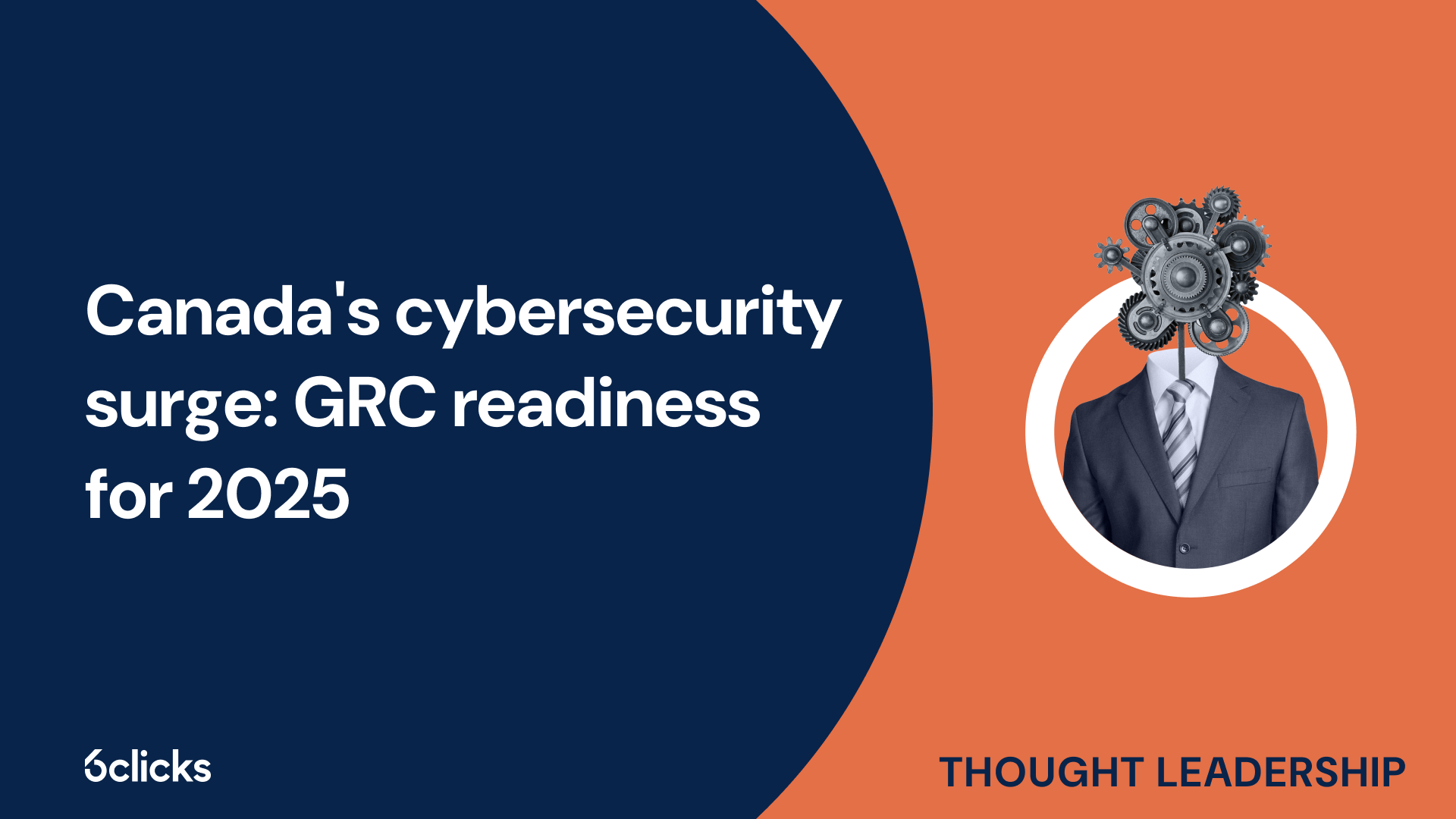Cyber resilience in 2025: Your smart guide to NIST CSF
Boost your organization's cyber resilience with this expert guide to the NIST Cybersecurity Framework. Learn to assess risk, improve security posture, and automate compliance with AI-powered tools.
-1.png?width=200&height=249&name=Group%20193%20(1)-1.png)
Cyber resilience in 2025: Your smart guide to NIST CSF
What is NIST?
The National Institute of Standards and Technology (NIST) is a federal agency that develops and promotes measurement and testing standards across various industries in the United States. NIST also plays a crucial role in the field of cybersecurity, specifically through its publication of the NIST Special Publication 800-53. This publication provides a comprehensive catalog of security controls that federal agencies can leverage to protect their information systems and data. These controls are divided into three types: management controls, operational controls, and technical controls. Management controls include activities such as risk management processes and security program planning. Operational controls encompass activities like access controls and contingency planning. Technical controls involve the implementation of security systems and configurations that protect against potential threats. By implementing these three types of security controls, federal agencies can better mitigate the risks and protect their information systems from unauthorized access, physical threats, and other security incidents.
Overview of security controls
Security controls are essential components of any risk management strategy and help protect federal information systems from potential threats. The National Institute of Standards and Technology (NIST) defines three types of security controls: preventive, detective, and corrective. These controls form the foundation of a comprehensive security program plan that ensures compliance with security standards and requirements.
Preventive security controls anticipate and block security incidents proactively. They include access control policies and procedures, authentication and authorization practices, system configuration hardening guidelines, firewalls, and intrusion detection/prevention systems (IDS/IPS). These controls help prevent unauthorized access, mitigate insider threats, and safeguard against attacks.
Detective security controls aim to identify and react to security incidents promptly. They encompass data encryption practices, audit trails, and logging mechanisms, vulnerability scanning techniques, penetration testing processes, and network monitoring strategies. These controls enable the timely detection of potential security breaches, unauthorized activities, or system vulnerabilities.
By implementing both preventive and detective controls, organizations establish a layered defense mechanism that enhances the security posture of their systems. Corrective controls, specific to incident response and recovery, are also integral and contribute to effective security incident management.
Types of security controls defined by NIST
NIST, or the National Institute of Standards and Technology, defines three types of security controls: preventive controls, detective controls, and corrective controls.
Preventive controls are designed to anticipate and block security incidents proactively. They include access control policies and procedures, authentication and authorization practices, system configuration hardening guidelines, firewalls, and intrusion detection/prevention systems (IDS/IPS). These controls aim to prevent unauthorized access, mitigate insider threats, and safeguard against attacks.
Detective controls, on the other hand, focus on identifying and reacting to security incidents promptly. They encompass data encryption practices, audit trails, logging mechanisms, vulnerability scanning techniques, penetration testing processes, and network monitoring strategies. By implementing detective controls, organizations can detect potential security breaches, unauthorized activities, or system vulnerabilities in a timely manner.
Lastly, corrective controls are specific to incident response and recovery. They are integral elements of effective security incident management. Corrective controls include incident response plans, backup and restoration processes, system recovery procedures, and employee awareness training.
These security controls can be categorized into different types based on their nature. Physical controls refer to measures such as locks, surveillance systems, and access control systems that physically protect resources. Technical controls include security solutions like firewalls, encryption, and IDS/IPS systems. Administrative controls encompass security policies, procedures, and guidelines that dictate security measures.
Type 1: preventative security controls
Preventative controls are a crucial aspect of an effective security program. They are designed to proactively anticipate and block security incidents before they occur. These controls aim to prevent unauthorized access, mitigate insider threats, and safeguard against attacks. They include access control policies and procedures, authentication and authorization practices, system configuration hardening guidelines, firewalls, and intrusion detection/prevention systems (IDS/IPS). By implementing preventative controls, organizations can establish a strong defense against potential threats, ensuring the integrity, confidentiality, and availability of their information assets. These controls are especially important for federal agencies and organizations that deal with sensitive data, as they help comply with compliance requirements, protect against external and internal threats, and maintain the security and privacy of federal information systems. Additionally, preventative controls play a vital role in supporting a risk management strategy by reducing the likelihood and impact of security incidents.
Access control policies and procedures
Access control policies and procedures play a crucial role in preventing unauthorized access to sensitive data within federal agencies and other organizations. These policies define the rules and guidelines for granting or denying user access to systems, networks, and devices, ensuring that only authorized individuals can access the necessary resources.
By implementing access control policies, organizations can enforce the principle of least privilege, ensuring that users have only the necessary access rights to perform their duties. This helps mitigate the risk of insider threats and unauthorized access, protecting sensitive information from potential breaches.
Proper procedures are essential to effectively enforce access control policies. This includes conducting regular user access reviews, monitoring access logs, and implementing strong authentication methods such as two-factor authentication. Additionally, organizations must regularly update their access control policies to adapt to changing security requirements and compliance standards.
By implementing robust access control policies and procedures, organizations can significantly enhance their security posture, protect sensitive data, and comply with various regulatory requirements. These measures form a crucial part of a comprehensive risk management strategy, ensuring that access privileges are granted based on the principle of least privilege and minimizing the risk of unauthorized access to critical systems and data.
Authentication and authorization practices
Authentication and authorization practices play a vital role in ensuring secure access to systems and networks. Authentication is the process of verifying the identity of a user or device, while authorization determines the level of access rights and permissions granted to authenticated individuals.
Reliable user and device authentication is essential to prevent unauthorized access to sensitive information and protect against security threats. By implementing strong authentication methods such as two-factor authentication or biometric authentication, organizations can greatly enhance the security of their systems. These methods require users to provide multiple forms of identification, making it significantly more difficult for attackers to impersonate legitimate users.
Within the Identification and Authentication family, there are several controls that focus on reliable authentication. These controls include the use of multi-factor authentication, strong password policies, and secure token-based authentication. Multi-factor authentication requires users to provide at least two different types of credentials, ensuring a higher level of confidence in the authentication process.
Implementing these controls helps to ensure that only authorized individuals can access systems and networks, reducing the risk of unauthorized access and potential security breaches. By regularly reviewing and updating authentication and authorization practices, organizations can stay ahead of emerging threats and comply with security standards and requirements, ultimately enhancing the overall security posture of their systems and networks.
System configuration hardening guidelines
System configuration hardening guidelines play a crucial role in enhancing the security of an organization's infrastructure. These guidelines are part of the Configuration Management family within the National Institute of Standards and Technology (NIST) security controls.
One of the key controls in this family is the creation of a configuration policy. This policy establishes the rules and standards for configuring software and devices on the network. It outlines the authorized configurations and ensures that all systems comply with the organization's security requirements. By implementing a comprehensive configuration policy, organizations can reduce the risk of vulnerabilities resulting from misconfigurations.
Another important control is the establishment of a baseline configuration. A baseline configuration serves as a standard reference point for all systems within the organization. It defines the desired and secure configuration settings for software and devices. By implementing the baseline configuration on all systems, organizations can ensure consistency and reduce the attack surface by eliminating unnecessary or insecure configurations.
Effective management of unauthorized configuration or devices is also a crucial control within the Configuration Management family. This control focuses on monitoring and detecting any unauthorized changes to the system configuration or the introduction of unauthorized devices. By promptly identifying and addressing unauthorized configuration changes or devices, organizations can mitigate the risk of potential security incidents or breaches.
Firewalls and intrusion detection/prevention systems (IDS/IPS)
Firewalls and intrusion detection/prevention systems (IDS/IPS) play a crucial role in the context of security controls by helping prevent and detect unauthorized access and malicious activities in a network.
Firewalls act as a barrier between an organization's internal network and external networks, such as the internet. They monitor and control incoming and outgoing network traffic based on predetermined security policies. Firewalls can block or allow specific types of traffic, such as blocking certain IP addresses or restricting access to specific ports. By doing so, firewalls prevent unauthorized access attempts from malicious actors and protect the network from potential threats.
Intrusion detection/prevention systems (IDS/IPS) are designed to detect and respond to unauthorized activities or potential security breaches within a network. These systems analyze incoming and outgoing network traffic in real-time, searching for patterns and anomalies that may indicate a potential attack. IDS/IPS can detect various types of malicious activities, including the use of known attack signatures, abnormal traffic patterns, or suspicious behavior. Once an intrusion is detected, IDS/IPS can take immediate action to prevent further damage, such as blocking the source IP address or terminating the connection.
Key features and functionalities of firewalls and IDS/IPS include the ability to monitor network traffic, enforce security policies, provide logging and auditing capabilities, and support real-time threat detection and prevention. These systems are essential components of a comprehensive network security strategy, as they help protect against unauthorized access, data breaches, and other malicious activities.
Data encryption practices
Data encryption is a critical component of security controls defined by the National Institute of Standards and Technology (NIST). These controls outline the best practices for protecting sensitive information from unauthorized access and potential data breaches.
Data encryption involves transforming plaintext data into ciphertext using an encryption algorithm and a cryptographic key. This process ensures that even if an unauthorized individual gains access to the encrypted data, they cannot decipher it without the proper key.
NIST recommends the use of strong encryption techniques to safeguard sensitive information. Two commonly used encryption techniques are symmetric key encryption and asymmetric key encryption.
Symmetric key encryption uses the same key for both the encryption and decryption processes. This means that the sender and the recipient must share the same key. This method is efficient for securing data within a closed system where the key can be securely exchanged.
Asymmetric key encryption, also known as public-key encryption, involves the use of a key pair: a public key for encryption and a private key for decryption. The public key can be freely shared, while the private key must be kept secret. This technique allows for secure communication between parties who have never shared a key before.
Hashing is another encryption technique commonly used to ensure data integrity. Hash functions generate a unique hash value for each input, making it nearly impossible to reverse-engineer the original data. This technique is often used to verify the integrity of transmitted data or passwords.
By implementing data encryption practices in line with NIST security controls, organizations can protect sensitive information from unauthorized access, mitigating the risk of data breaches and safeguarding the confidentiality and integrity of their data.
Risk management strategies and tools
Risk management strategies and tools play a vital role in addressing cyber security risks within an organization. These strategies enable organizations to identify, assess, and respond to potential threats, ensuring the confidentiality, integrity, and availability of their information and systems.
One of the key risk management strategies is the development of a comprehensive risk management plan. This plan outlines the organization's approach to risk management, including the identification of potential risks, their potential impact, and the measures to mitigate these risks. It serves as a roadmap for managing cyber security risks effectively.
Additionally, risk assessments are essential in identifying system vulnerabilities. Through vulnerability assessments, organizations can identify weaknesses in their systems, networks, and processes that may be exploited by cyber attackers. These assessments help organizations prioritize their resources and implement appropriate risk response procedures to address the identified vulnerabilities.
Another important aspect of risk management is the ongoing monitoring of vulnerabilities. This involves using tools and processes to continuously monitor the organization's systems, networks, and applications for any new vulnerabilities that may arise. This proactive approach allows organizations to address vulnerabilities promptly and minimize the potential impact of cyber attacks.
In the context of supply chain risk management, organizations must assess and mitigate risks associated with their external vendors and partners. This includes evaluating the security practices and controls of these entities and establishing contractual agreements that outline security requirements.
Type 2: Detective security controls
Detective security controls, one of the three types of security controls outlined by NIST, play a vital role in identifying and responding to security incidents. These controls primarily focus on detecting and alerting organizations to the presence of unauthorized access, security breaches, or other potential threats. By actively monitoring systems, networks, and applications, detective controls help organizations quickly identify security incidents and take appropriate actions to mitigate their impact. These controls include activities such as logging and monitoring system events, conducting security incident and event management (SIEM), and implementing intrusion detection and prevention systems. With detective controls in place, organizations can enhance their ability to detect and respond to security incidents promptly, reducing the potential damage and minimizing downtime.
Audit trails and logging mechanisms
Audit trails and logging mechanisms are important security controls defined by the National Institute of Standards and Technology (NIST) in their catalog of security controls. These controls fall under the category of audit and accountability and are crucial for ensuring the security of federal information systems.
Audit trails are records of events that occur within a system. They can include user activities, system activities, and other events that are relevant to the security of the system. Logging mechanisms, on the other hand, are the mechanisms that capture and store these audit logs.
The importance of audit trails and logging mechanisms lies in their ability to identify system issues and breaches, as well as hold staff accountable for their actions. By maintaining comprehensive audit trails and logging mechanisms, federal agencies can monitor and track security incidents, identify potential threats, and respond promptly to security breaches.
The baseline content of audit records should include information such as the event type, the time the event occurred, the user or system responsible for the event, and any relevant identifying information. The storage capacities for log records should be sufficient to retain logs for a specified period, based on compliance requirements and risk management strategies.
Guidelines for log monitoring and reviews should be established to ensure that logs are regularly monitored for security incidents, anomalies, and unauthorized access. Regular reviews of logs can help identify patterns and trends in security incidents, improve the overall security posture, and aid in the investigation of security breaches.
Vulnerability scanning techniques
Vulnerability scanning techniques play a crucial role in the security risk assessment process for organizations. These techniques involve the use of specialized tools, such as vulnerability scanners, to identify potential weaknesses or flaws in an organization's IT infrastructure.
By conducting vulnerability assessments, organizations can proactively detect vulnerabilities in their systems and applications before they are exploited by malicious actors. This allows for the implementation of appropriate risk mitigation measures, reducing the organization's risk exposures.
Vulnerability scanners are designed to scan and analyze network devices, servers, and software applications for security vulnerabilities. These tools employ a database of known vulnerabilities and exploit techniques to identify potential weaknesses in an organization's IT assets.
The results of vulnerability assessments provide valuable insights into an organization's security posture, highlighting areas that need improvement and enabling the development of a robust risk management plan. By addressing these vulnerabilities, organizations can prevent security breaches, unauthorized access, and data breaches.
Penetration testing processes
Penetration testing is a crucial process used in security controls to identify vulnerabilities and ensure the effectiveness of security policies. The primary purpose of penetration testing is to simulate real-world attacks on a system or network to assess its security posture. By conducting controlled attacks, organizations can evaluate their defenses, identify potential weaknesses, and take necessary actions to mitigate risks.
Regular penetration testing is essential for maintaining a strong security posture. It enables organizations to proactively identify vulnerabilities before malicious actors exploit them. By simulating real-world attacks, penetration testing helps organizations understand their vulnerabilities from an attacker's perspective. It allows security teams to assess the effectiveness of their security controls, incident response capabilities, and overall security posture.
Conducting regular penetration tests also helps improve incident response capabilities. By testing the organization's defenses against different attack scenarios, security teams can identify gaps in their incident response plans and address them accordingly. This allows organizations to refine their incident response processes, train personnel, and implement necessary security measures to minimize the impact of potential security incidents.
Network monitoring strategies
Network monitoring is crucial for organizations to maintain compliance with NIST SP 800-53 and ensure the security of their network environments. There are several strategies that organizations can implement to effectively monitor their networks.
One such strategy is log monitoring. This involves analyzing real-time events or stored data to ensure application availability and assess the impact on performance. By monitoring logs, organizations can identify potential security incidents, track user activities, detect unauthorized access attempts, and analyze system performance. This allows them to quickly respond to security threats and take appropriate action to mitigate any potential risks.
Another important strategy is video surveillance. Video surveillance systems capture digital images and videos, enabling organizations to monitor their premises both onsite and remotely. This helps enhance physical security by deterring potential threats and providing visual evidence in case of security incidents. Video surveillance also plays a vital role in monitoring access points, identifying suspicious activities, and ensuring the safety of individuals and assets.
By implementing these network monitoring strategies, organizations can proactively monitor their networks, detect security threats, and ensure compliance with NIST SP 800-53. These strategies provide organizations with the visibility and control necessary to maintain a strong security posture and protect their valuable assets.







